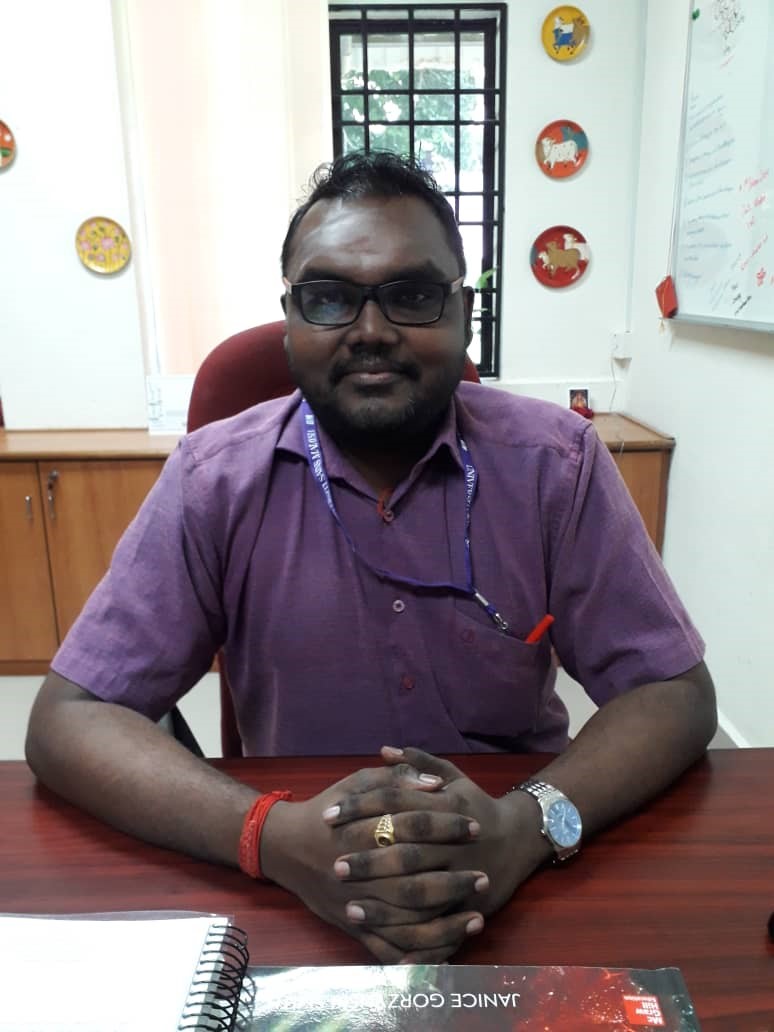Dr. Thiruventhan Karunakaran

|
|
CHM DR. THIRUVENTHAN KARUNAKARAN
BSc (Hons) (UPM), PhD (UPM)
Contact Information:
E-mail: thiruventhan@usm.my
Telephone: +604-653 3287
Address: Centre for Drug Research, Universiti Sains Malaysia,
11800 Penang
 
|
My key research area focusing on the field of natural product chemistry, medicinal chemistry, pharmaceutical chemistry and pharmacognosy. Natural products from flora and fauna have become the essential source for discovery of new drugs especially on new psychoactive substances (NPS) based on the new chemical compounds/entities found through the studies conducted by researchers around the globe. Throughout the ages, since ancient times, natural products have played a vital role in the daily life of human beings especially in traditional medicine. It is known as the source of active ingredients of medicine used to treat various diseases. Natural products or natural product derived compounds represent great structural diversity, which is not commonly seen in synthetic compounds and also contributes to the emergence of new psychoactive substances (NPS). Natural products offer great hope in the identification of bioactive compounds and their development into drugs for the treatment many types of diseases. Besides that, plants have been the source for many traditional medicine systems throughout the world for thousands of years and continue to provide mankind with new remedies. Phytochemical studies have enabled researchers to identify bioactive hit compounds responsible for medicinal properties with the aid of analytical and spectroscopic chemistry techniques. Through phytochemical studies, researchers can prove the effectiveness of plant-based medicines which have been used since ancient civilizations as well as the safety of plant-based medicines compared to available synthetic drugs.
My current research focuses on drug discovery and preclinical studies of potential compounds especially those with psychoactive properties from natural, semi- synthetic as well as botanical drug development and herbal standardization for the treatment of addiction and pain. I also conduct research on assessing the toxicity of the compounds from natural, semi-synthetic as well as on plant extracts through in- vitro studies on selected normal and cancer cell lines. With our research strength in chemical and pharmaceutical analysis, chemical spectroscopy including advance spectroscopic techniques (NMR, qNMR, LCMS, GCMS, and FTIR,) and pharmacognosy, potential compounds from natural products, semi-synthetic and standardize extracts will be subjected to preclinical evaluation.
Current Research Project:
- Evaluation of antinociceptive effect and cytotoxicity on M. speciosa leaf extracts using accelerated solvent extraction (ASE) technique
- Drug stability analysis of mitragynine, 7-hydroxymitragynine and its salt derivatives
- Evaluation of cytotoxicity on selected plant samples against selected normal cell lines and cancer cell lines
- Antiproliferatives and neuroprotective xanthones from selected species form the genus Calophyllum
- Standardization of silica from the young culm of bamboo
- Development of new pyrazole derivatives of pyrrolylatedchalcones as antibacterial agents
- Hepatoprotective activity study of Malaysian underutilised tuber extracts on drug metabolising enzymes
Current MSc student (as main supervisor)
SELECTED PUBLICATIONS (FROM 2010)
- Ramli F, Hamid MA, Wahab RA, Ismail IS & Karunakaran T. 2019, Ultrasonic-assisted extraction and purification of phalerin from Phaleria macrocarpa: response surface methodology and artificial neural network modeling, Arab. J. Sci. Eng.
- Vijaykumar R, Gani SSA, Zaidan UZ, Halmi MIE, Karunakaran T and Hamdan MR. 2020. Exploring the potential use of red pitaya peels as a source of cosmeceutical sunscreen agent for its antioxidant and photoprotective properties. Evid.-Based Complementary Altern. Med. 2020 (Article ID 7520736). https://doi.org/10.1155/2020/7520736
- Wang L, Xu J, Yan Y, Liu H, Karunakaran T & Li F. 2019. Green synthesis of gold nanoparticles from Scutellaria barbata and its anticancer activity in pancreatic cancer cell (PANC‐1). Artif. Cells. Nanomed. Biotechnol. 47(1): 1617-1627.
- Karunakaran T, Ee GCL & Ismail IS. 2019. Anti-Bacillus and nitric oxide inhibitory activities of Malaysian Garcinia mangostana extracts and their major constituents, Int. Food. Res. J. 26(2):705-711.
- Singh D, Damodaran T, Prozialeck WC, Grundmann O, Karunakaran T & Balasingam V. 2018. Constipation prevalence and fatigue severity in regular kratom (Mitragyna speciosa Korth.) users. J. Subst. Use. 24(3): 233-239.
- Li S, Ma Y, Karunakaran T & Ravindran Jaganathan. 2019. Sesame inhibits cell proliferation and induces apoptosis through inhibition of STAT-3 translocation in thyroid cancer cell lines (FTC-133), Biotechnol. Bioproc. E. 24: 646-652 DOI 10.1007/s12257-019-0151-1
- Karunakaran T, Ee GCL, Ismail IS, Nor SMM, Palachandran K, Santhanam RK. 2018. Nitric Oxide Inhibitory and Anti-Bacillus activity of phenolic compounds and plant extracts from Mesua (Calophyllaceae) species.Rev. Bras. Farmacogn. DOI:10.1016/j.bjp.2018.01.007
- Tee KH, Ee GCL, Ismail IS, Karunakaran T, Teh SS, Jong VYJ, Nor SMM. 2018. A new coumarin from stem bark of Calophyllum wallichianum. Nat. Pro. Res. DOI: 10.1080/14786419.2018.1428588.
- Tee KH, Ee GCL, Wong KW, , Karunakaran T, Jong VYJ, Teh SS. 2018. Natural products from stem bark of Calophyllum andersonii. Pertanika. J.T.A.S.1242-2017.
- Karunakaran T, Ee GCL, Ismail IS, Nor SMM, Zamakshshari NH. 2017. Acetyl- and O-Alkyl- Derivatives of β-Mangostin from Garcinia mangostana and their Anti-Inflammatory Activities. Nat. Prod. Res.DOI:10.1080/14786419.2017.1350666
- Wong KW, Ee GCL, Ismail IS, Karunakaran T, Jong VYJ. 2017. A new pyranoxanthone from Garcinia nervosa. Nat. Pro. Res. DOI: 10.1080/14786419.2017.1315717.
- Karunakaran T, Ee GCL, Tee KH, Ismail IS, Zamakshshari NH, Peter WM. 2016. Cytotoxic prenylated xanthone and coumarin derivatives from Malaysian Mesua beccariana .Phytochem Lett. 17:131-134.
- Waziri PM, Abdullah R, Yeap SK, Omar AR, Abdul AB, Kassim K, Malami I, Karunakaran T, Imam MU. 2016. Clausenidin from Clausena excavata induces apoptosis in hepG2 cells via the mitochondrial pathway. J. Ethnopharm.194:549-558.
- Zamakshshari NH, Ee GCL, Teh SS, Daud S, Karunakaran T, Ismail IS. 2016. Natural product compounds from Calophyllum depressinervosum. Pertanika. J.T.A.S. 39 (2): 249-255
- Lee KW, Ee GCL, Daud S, Karunakaran T. 2017. Xanthones from Calophyllum inophyllum. Pertanika. J.T.A.S. 40(1):111 – 118.
- Karunakaran T, Ee GCL, Teh SS, Daud S, Mah SH, Lim CK, Jong VY, Awang K. 2015. A new coumarin from stem bark of Mesua hexapetala. Nat. Pro. Res. 30(14):1591-7. DOI: 10.1080/14786419.2015.

